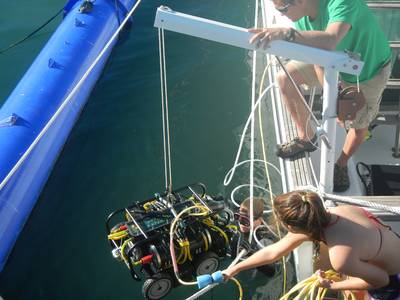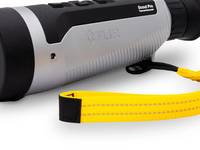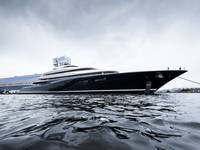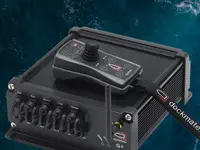SeaRobotics Delivers Autonomous Hull Cleaning System
SeaRobotics has delivered the first HullBUG (Hull Bio-inspired Underwater Grooming) System to the Center for Corrosion and Biofouling Control at Florida Institute of Technology in Melbourne.
This will be tested and further developed at the newly commissioned Large Scale Seawater Facility , which is located at Port Canaveral and funded by the U.S. Navy Office of Naval Research (ONR).
The HullBUG system is an autonomous underwater vehicle designed to crawl on ship hulls or other underwater structures and "groom" their surface. This will keep them clean of marine growth and the surfaces in a smooth condition.
“The highly automated proactive grooming, or light cleaning, a process developed by SeaRobotics and funded by ONR, will revolutionize hull maintenance allowing it to remain in a clean state at all times,” said Geoffrey Swain, Florida Tech professor of ocean engineering.
Swain heads the research and development project at the university, joined by John Hearin, a post-doc researcher. They and their undergraduate and graduate students have begun putting HullBUG through its paces on an 8-foot by 30-foot steel plate, coated with U.S. Navy-qualified antifouling coatings, which simulates a ship’s hull.
The benefits of improved hull condition are dramatic. The estimated five percent improvement in fuel efficiency achieved through proactive grooming translates into a savings of $15 billion a year for the worldwide shipping industry. Additionally, this grooming will achieve a proportional reduction in the one billion tons of Greenhouse Gases (GHG) emitted by the fleet.
HullBUG, a small autonomous vehicle weighing 30-40 kilograms, attaches to the hull and performs a gentle cleaning function, or grooming. Numerous embedded computers perform navigation and sensing tasks to facilitate grooming the ship hull. The capabilities to attach to ferrous, non-ferrous and fiberglass hulls and to deploy various sensors allow the HullBUG to meet several inspection challenges. Opportunities are being explored in commercial shipping, oil and gas, nuclear and conventional power generation markets.
“The financial benefits to the commercial shipping industry of HullBUG- enabled proactive grooming are enormous. Equally impressive are the associated environmental benefits derived from improved hull efficiency,” said Don Darling, President of SeaRobotics.





